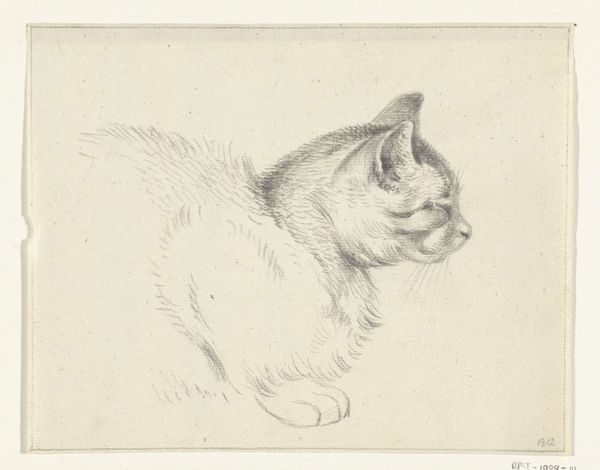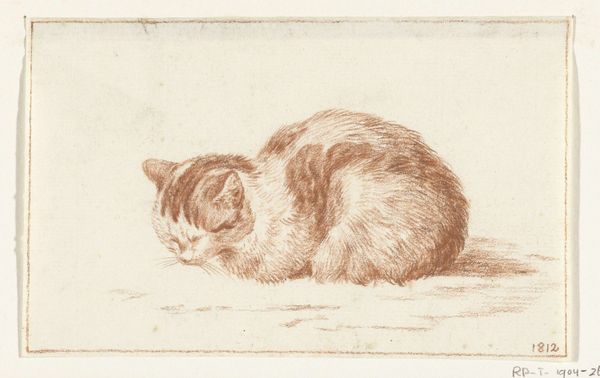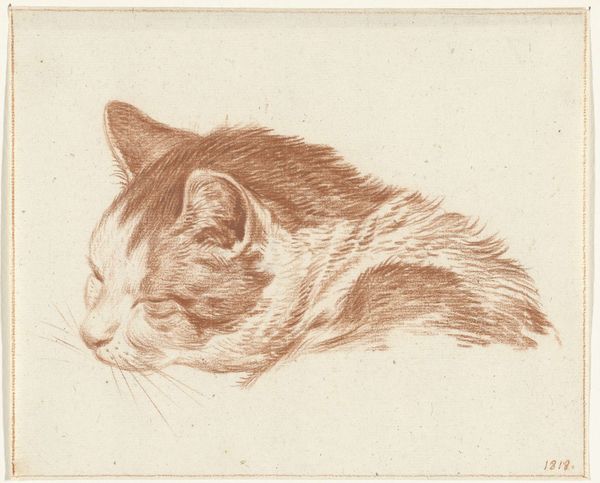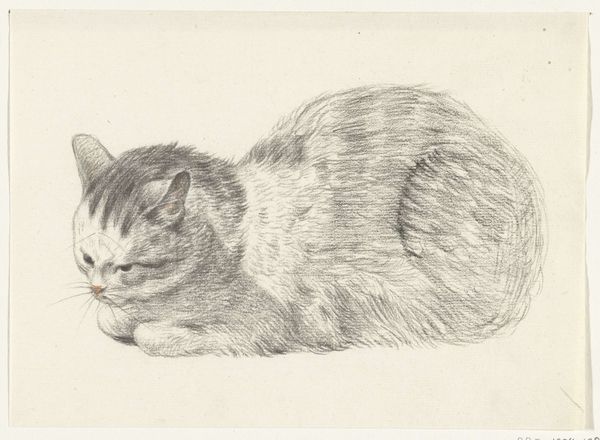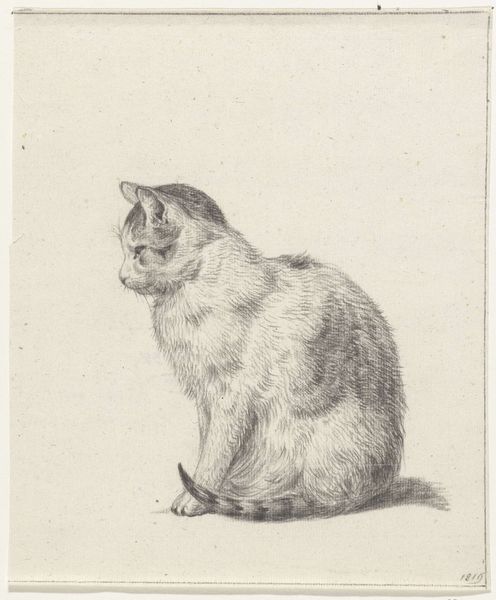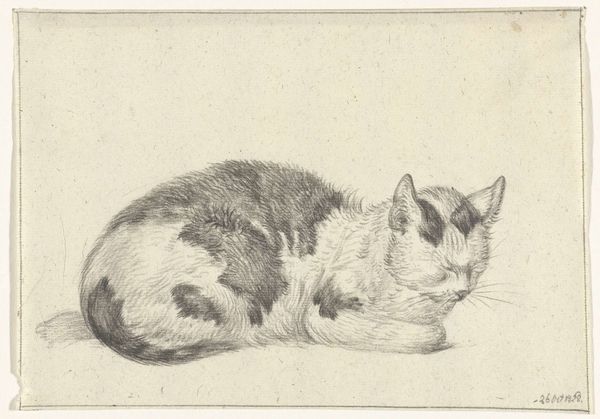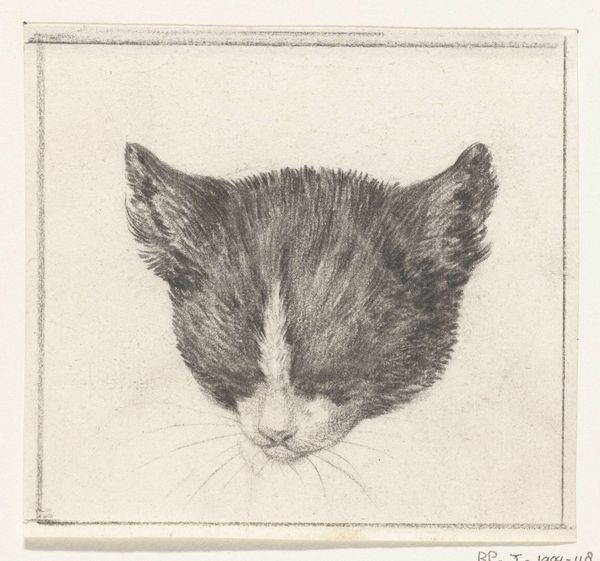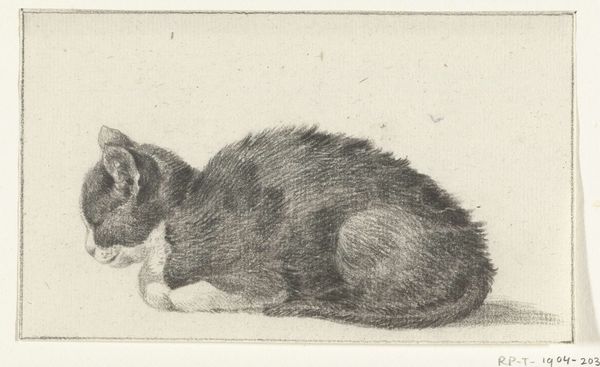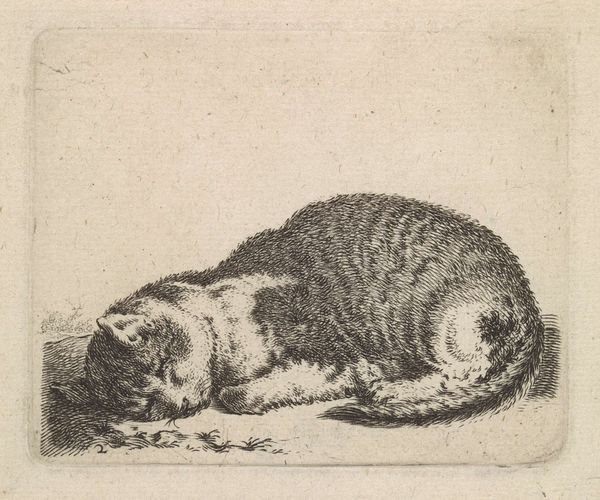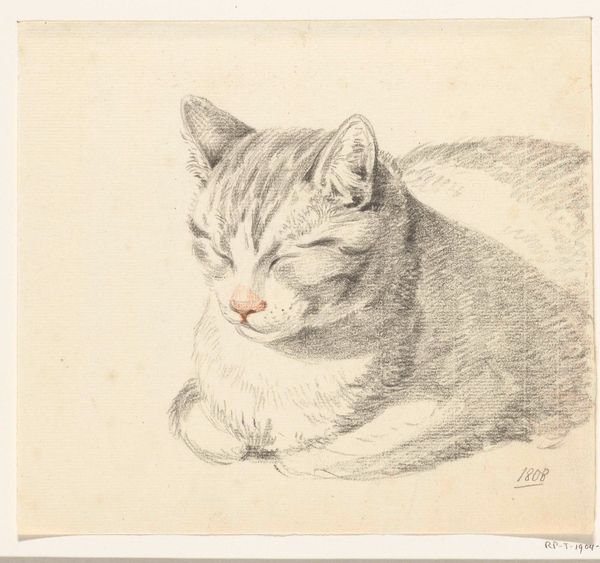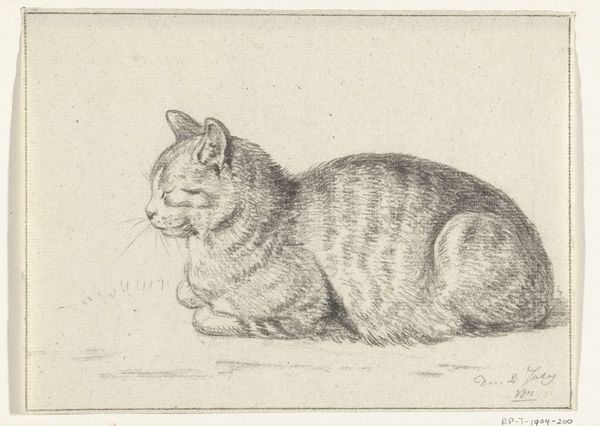
drawing, pencil
#
portrait
#
drawing
#
amateur sketch
#
light pencil work
#
pencil sketch
#
incomplete sketchy
#
personal sketchbook
#
ink drawing experimentation
#
pen-ink sketch
#
pencil
#
ink colored
#
sketchbook drawing
#
sketchbook art
#
realism
Dimensions: height 132 mm, width 212 mm
Copyright: Rijks Museum: Open Domain
Curator: Welcome! Here we have "Liggende, slapende kat" or "Reclining, Sleeping Cat" a drawing made with pencil from the years 1782 to 1837. It’s part of the Rijksmuseum collection and is credited to Pieter Bartholomeusz Barbiers. Editor: It's…peaceful. Almost like a snapshot of domesticity, or the kind of scene one might idly capture in a personal sketchbook. It really invites you to bring that gentle, quiet contemplation into your present. Curator: Right. These more informal sketches offer us insight into an artist’s broader practice. Here, we can almost feel the artist experimenting, observing this quiet scene from daily life and rendering it. The political and social contexts, in this instance, take a back seat to that more personal endeavor. Editor: I agree to an extent. I see an engagement with realism, sure, but also with representation. I wonder about access – the privilege, even, to have the time and materials to produce images of leisure, like a sleeping cat. It seems almost a world apart from, say, a Brechtian aesthetic aiming to awaken viewers. Curator: That’s a fair point. While this might not explicitly confront socio-political issues, one could argue the scene implies certain comforts available to the artist and perhaps a particular segment of society. Do you see it as commentary then? Editor: Not overtly, but everything is context, isn’t it? A simple pencil sketch can become charged when we start considering the artist's positionality and the social tapestry they were a part of. Art history and contemporary theory, you see. Curator: It also begs questions about audience and purpose, of course. Was this simply for personal enjoyment, or was Barbiers also considering who might view it? The drawing allows for such questions. Editor: Absolutely. It becomes an artifact of a specific moment, reflecting both the artist's gaze and the potential viewers they might have imagined. These small sketches can tell fascinating stories if we ask them the right questions. Curator: Well, thank you for shedding that additional light! Editor: Likewise. These are the conversations that keep art relevant and engaging.
Comments
No comments
Be the first to comment and join the conversation on the ultimate creative platform.

